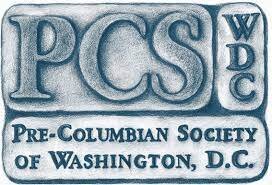Unwrapping Khipu History: Using Structural Analysis to Trace the Development of Inka Khipus By: Jeffrey C. Splitstoser, PhD
Prior to contact with the Old World, the peoples of the New World—other than the Maya—did not write, at least not in the way Westerners think of writing where signs (letters) represent speech. The Inkas, who ruled much of South America at the time of conquest, did not write, but they had khipus, knotted-string devices that served as their primary recordkeeping tool. The Inkas ran an empire using khipus. Unfortunately, there is no guide to reading khipus, no khipu “Rosetta Stone,” no dictionary. What we know comes primarily from ethnohistorical sources (Spanish chroniclers), court documents, and archaeology.
Recent research, including ongoing excavations at El Castillo de Huarmey, has confirmed the existence of Middle Horizon (ca. AD 500–1000) Wari (Peru’s first empire) khipus, proving that the khipu was not invented by the Inka. They represent the culmination of thousands of years of technological development whose origins might be found as early as Late Paracas times (ca. 500–200 BC), where excavations at the Ica Valley site of Cerrillos revealed khipu-like objects made ca. 350‒300 BC. Using original research, this talk will discuss the development of Inka khipus from their possible origins in Late Paracas wrapped cords through their antecedents in intricately wrapped and knotted Middle Horizon Wari khipus.
Dr. Jeffrey C. Splitstoser is currently an Assistant Research Professor of Anthropology at George Washington University. He received his Master’s degree (1999) and PhD (2009) in anthropology from The Catholic University of America, Washington, D. C. Splitstoser’s dissertation research focused on textile practices and culture at Cerrillos, an Early Paracas site in the Ica Valley in Peru. He is currently researching at El Castillo de Huarmey, studying textiles and khipus recently excavated from the tombs of three Wari queens (ca. AD 700–1000).[1] Splitstoser is also the textile specialist for the Huaca Prieta Archaeological Project (Tom Dillehay, principal investigator), studying 6,200-year-old cotton textiles, some colored blue and representing the earliest known use of indigo dye in the world. Splitstoser is a research associate of the Institute of Andean Studies, Berkeley. He is also Vice President of the Boundary End Archaeology Research Center in Barnardsville, North Carolina, and the editor (with Dr. David Stuart) of its peer-reviewed journals, Ancient America and Research Reports on Ancient Maya Writing. He also provides consultation on Andean textiles for the National Museum of the American Indian. Splitstoser was a Junior Fellow at the Dumbarton Oaks (2005‒2006). He is a Cosmos Club scholar.
[1] “Peru’s Royal Wari Tomb,” http://ngm.nationalgeographic.com/2014/06/peru-tomb/pringle-text
